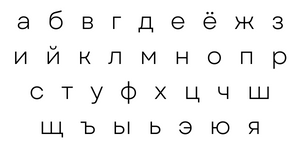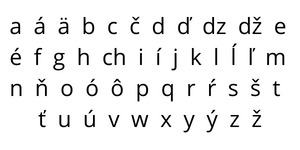Slovak and Russian: Language Similarities and Differences
The similarities between Slovak and Russian come from the fact that both are Slavic languages. The most obvious difference is that Slovak uses the Latin script while Russian uses the Cyrillic script.
Similarities in vocabulary between Slovak and Russian
Slovak and Russian are both Slavic languages which means that they both originated from a common ancestral language which linguists have named the Proto-Slavic language.
As a result there is a high degree of lexical similarity between Slovak and Russian, meaning that there are many similar vocabulary words between the two languages.
The following table shows some similar vocabulary words between Slovak and Russian. To make the comparison easier, the Russian words are provided with their phonetic transcription (in blue).
| Slovak | Russian | English |
|---|---|---|
| jazyk | язык (yazyk) | language |
| svoboda | свобода (svoboda) | freedom |
| zelený | зеленый (zelenyy) | green |
| les | лес (les) | forest |
| voda | воды (voda) | water |
| pravda | правда (pravda) | truth |
| ruka | рука (ruka) | hand |
| sýr | сыр (syr) | cheese |
| řeka | река (reka) | river |
| moře | море (more) | sea |
| maso | мясо (myaso) | meat |
| oběd | обед (obed) | lunch |
| ryba | рыбы (ryba) | fish |
| mír | мир (mir) | peace |
| teplý | теплый (teplyy) | warm |
| temný | темный (temnyy) | dark |
| svatba | свадьба (svadba) | wedding |
| vysoký | высокий (vysokiy) | tall |
| večer | вечер (vecher) | evening |
| otec | отец (otets) | father |
| chléb | хлеб (khleb) | bread |
| včera | вчера (vchera) | yesterday |
| zlato | золото (zoloto) | gold |
| nový | новый (novyy) | new |
| učitel | учитель (uchitel) | teacher |
Slovak and Russian vocabulary “false friends”
Most of the Slovak and Russian words which appear to be similar have the same meaning. There are however a few pairs of vocabulary words which appear similar, yet have completely different meanings.
In the context of language learning, these pairs of vocabulary words which appear similar but have different meanings are called “false friends”.
Those who already know either Slovak or Russian and are learning the other language should be mindful of these vocabulary “false friends” in order to avoid making mistakes.
| Russian | Slovak |
|---|---|
| красный (krasnyy) meaning: red |
krásny meaning: beautiful |
| овощи (ovoshchi) meaning:vegetables |
ovocie meaning: fruit |
| мрак (mrak) meaning: darkness |
mrak meaning: cloud |
| родина (rodina) meaning: motherland |
rodina meaning: family |
| неделя (nedelya) meaning: week |
nedeľa meaning: sunday |
| вонять (vonyat) meaning: stink |
voňať meaning: smell, scent |
| пахнуть (pakhnut') meaning: smell, scent |
páchnuť meaning: reek |
| пара (para) meaning: pair, couple |
para meaning: steam |
Other similarities between Slovak and Russian
The absence of articles in Slovak and Russian
Slovak and Russian are languages which don’t have articles. This is a significant difference compared to English, where articles (“the”, “a”, “an”) are among the most frequently used words.
The absence of articles is common in Slavic languages, with Bulgarian being an exception.
Since Slovak and Russian don’t have articles, that often leads to sentences having fewer words than their English equivalents. For example:
- a book in the library
- книга в библиотеке (kniga v biblioteke)
- kniha v knižnici
“The book”, and “a book” both translate to “kniha” in Slovak. But demonstrative words can be used: “tá kniha” (that book).
Grammatical cases in Slovak and Russian
Another similarity between Slovak and Russian is that they both have an extensive system of grammatical cases.
When used in a sentence, a word may have a different ending to indicate its grammatical function.
For example, the word “book” is “книга” (kniga) in Russian, and “kniha” in Slovak. The following example sentences show how the ending of this word changes to indicate its grammatical function:
- I am reading the book
- čítam knihu
- я читаю книгу (ya chitayu knigu)
Notice the absence of a personal pronoun in the Slovak sentence. By the way, the personal pronoun “I” is “Ja” in Slovak. Its pronunciation is similar to the corresponding Russian pronoun “я”.
The absence of that personal pronoun is due to the fact that Slovak is what linguists call a “pro-drop language”. Pro-drop languages are languages where personal pronouns can be “dropped” (omitted) when they can be inferred by the verb ending.
Well-known examples of pro-drop languages are Spanish and Italian. For instance the phrase “I love you” in Spanish is typically “Te quiero” and not “Yo te quiero”.
Russian is a language which is partially “pro-drop”. It is far less common in Russian to omit personal pronouns than it is in Slovak.
Slovak and Russian are both difficult languages for English speakers to learn
Slovak and Russian are both classified as category 3 languages by the US state department. The categories go from 1 to 4, with category 1 being the easiest languages, and category 4 being the hardest languages for English speakers to learn.
Category 3 languages such as Slovak and Russian are considered to be “difficult languages” which have significant linguistic differences relative to English.
One of the things which make Slovak and Russian difficult for English speakers to learn is their extensive use of grammatical cases.
Another difficulty of these languages is that they have three grammatical genders (masculine, feminine and neuter). In Slovak and Russian, every noun (even those representing inanimate objects) has a gender. That gender must be known in order to construct error-free sentences using that noun.
Slovak and Russian have different writing systems
The Slovak alphabet is based on the Latin script unlike the Russian alphabet which is based on the Cyrillic script.
The Slovak alphabet also contains significantly more letters than the Russian alphabet (46 vs. 33).
The Russian alphabet The Slovak alphabet
The Slovak alphabet

The Slovak alphabet uses a lot of diacritics which are little symbols placed next to a letter.
- The acute accent: This diacritic is familiar to those who have studied languages like Spanish or French. In Slovak, however, it can appear on consonants like “l” and “r” to make them long.
- The háček (or caron): This diacritic is also found in some other central European languages like Czech and Croatian. The word “háček” (which is used in English) comes from Czech; in Slovak it is called “mäkčeň”
- The umlaut: Unlike in German where this diacritic is also used, in Slovak it can only appear on the letter ‘a’.
- The circumflex accent: In Slovak this diacritic can only appear on the letter ‘o’.
The Slovak alphabet has a few digraphs (“dz”, “dž”, “ch” ) which are considered to be individual letters.
ConclusionSlovak and Russian are both Slavic languages, as a result there are many similar vocabulary words between them.
Slovak and Russian use different scripts. Slovak uses the Latin script and Russian uses the Cyrillic script.
Despite their similarities, Slovak and Russian are different languages. Each one has characteristics which make it unique.
For more on the Russian language, see these articles: